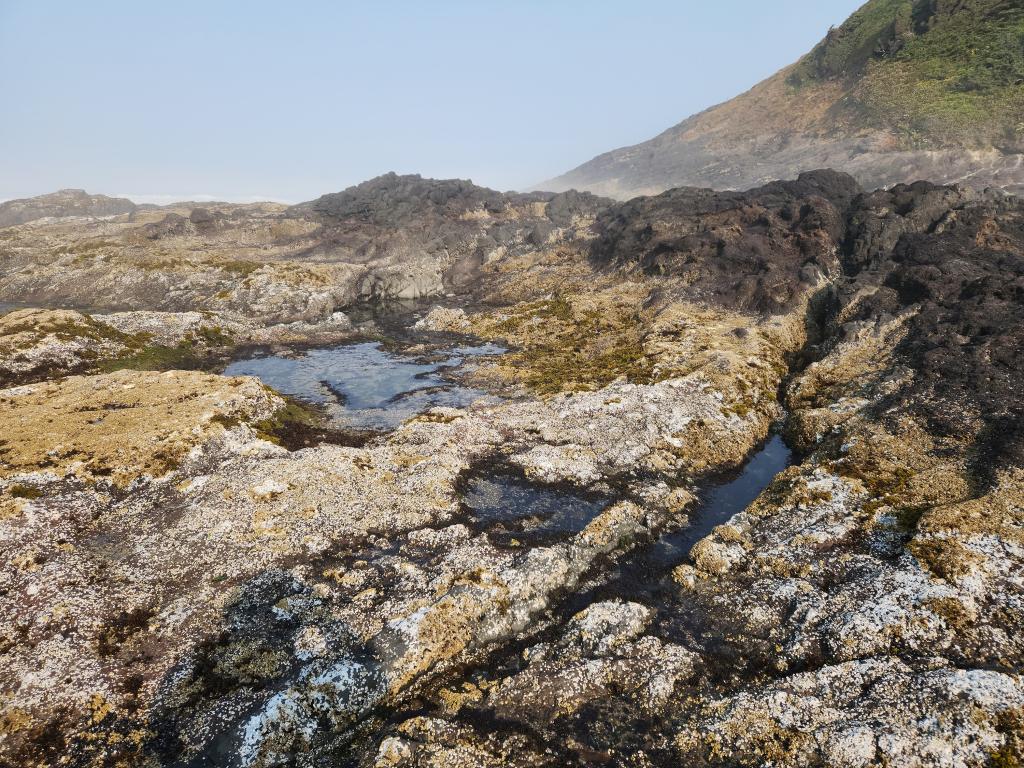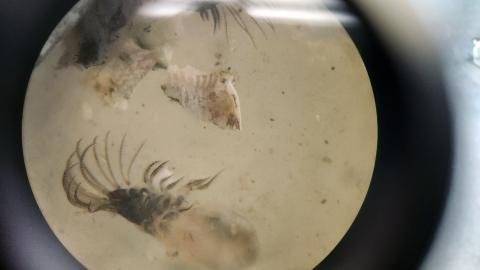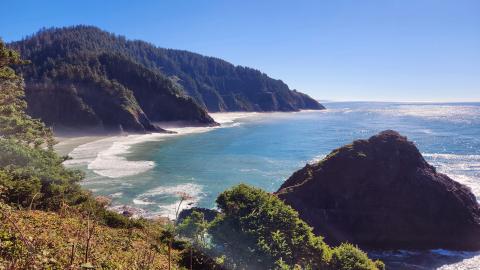
Editor's note: This story is part of The Marathons Series, a collection of articles written by faculty and students. It's a space to talk about work in progress and the process of research—think of it as the journey rather than the destination. We hope these stories help you learn something new and get in touch with your geeky side.
One of my favorite parts of the study of evolutionary biology is how sometimes species that, at first, do not seem the most remarkable can reveal incredible insights about the secrets of life when observed in more detail. We often think of animals like elephants, tigers, eagles, and dolphins that, due to their size and majesty, easily capture the attention of the public. Many of us can easily imagine the scenes (of course aptly narrated by David Attenborough) of lionesses stalking their prey in the African savannah, of mountain goats in death-defying climbs, or of a great white shark breaching the waters to catch a seal off the coast of South Africa. The careers of many biologists—mine included—can be traced back to an eager child fascinated by a nature documentary or a visit to a zoo.
Rule-breaking Weirdos
But of course, the diversity of life on Earth goes far beyond vertebrates! Notice I did not mention any insects. Or plants. Not even our very distant (and very often forgotten) cousins, the fungi. Bacteria? Viruses? For every one of the majestic and charismatic species, there are dozens upon dozens of odd-looking, foul-smelling, Wikipedia page-less weirdos. Each of these organisms has its own charm, and perhaps even its own group of admirers—young scientists who may one day trace back their future careers to one of these “less conventional” biological systems. It is often by studying the strange aspects of these creatures—the weird ways in which they break the “rules” of biology—that we gain understanding of important molecular, ecological, and evolutionary processes and how they function in living systems.
During my academic career I have, somewhat unintentionally, focused on weird organisms. During my PhD studies at the University of Illinois at Urbana-Champaign, I worked with white-blooded Antarctic icefishes. These fishes produce antifreeze proteins, which allow them to not instantly freeze to death in the sub-zero waters of the Southern Ocean. What makes icefishes extra special (and extra weird, in my opinion) is that they have lost hemoglobin, the protein that makes blood red and helps with the transport of oxygen. As a result, icefishes evolved other traits to survive with limited access to oxygen. I worked on sequencing their DNA to understand how they survive in the extreme Antarctic environment by playing fast and loose with more than a handful of biological rules most species on our planet seem to follow.

At the UO, I am studying another peculiar creature. My current project focuses on the population genetics of the Pacific acorn barnacle. Very common in the intertidal zone off the Oregon coast, this species can be found all the way from Baja California to Alaska (and are invasive in several other coastal regions around the world). As someone born and raised in Puerto Rico, I spent zero time thinking about acorn barnacles in cold Oregon tide pools before coming to the UO.
But what makes these barnacles weird or special? Barnacles spend their adult lives glued to a rock by their foreheads, feathery feet freely dangling in the flowing water above. We could argue that there is something odd there. And counterintuitively, from my perspective what makes barnacles special is how common they can be. If you go to a rocky shore on the Oregon coast, these barnacles are everywhere. Have you ever counted how many barnacles there are? Don’t worry, I haven’t either—there are just too many!
Venture down a trail to the shore at Cape Perpetua, just a few miles south of Yachats, and you will find barnacles covering every square meter of rock. There are other organisms that have higher abundances than barnacles, like some species of phytoplankton in the ocean. But compared to creatures found in nature documentaries, the sheer density of barnacles—up to tens of thousands of individuals per square meter spread along the nearly 3,000-mile coastline between Alaska and Baja California, is staggering. From this creature’s success we have much to learn about how evolutionary forces affect life on our planet.
Strength in Numbers
The size of a population plays an important role in determining the effect and strength of certain evolutionary forces. In smaller populations, random forces like genetic drift—changes to genes by chance events—play a predominant role. The frequency of alleles, which are different forms of a gene produced by mutations, can by chance alone change drastically in only a single generation. Natural selection (a deterministic evolutionary process) has less power to remove bad alleles, or vice versa, less power to increase the frequency of beneficial ones. That bad mutations are more likely to accumulate in small population sizes is the reason why we monitor the genetics of endangered species. These detrimental alleles can lead to increased mortality, which leads to even smaller populations, which leads to the accumulation of even more bad alleles, which result in even higher mortalities—an extinction vortex. Understanding those fundamental biological rules can have important consequences for the conservation and management of species.

Larger populations are at the other end of the population size versus evolutionary force spectrum. Natural selection has more power to increase the frequency of beneficial alleles, as well as to purge detrimental alleles from the population. For populous creatures like barnacles, genetic drift plays a smaller role in determining the fate of new mutations. In theory, these large populations should also have increased potential for adapting to their local environment. Said another way, biological rules impact large populations differently than species with smaller populations. Interestingly, scientists haven’t tested these processes in very large populations in the wild. Most of the data we have are from moderately large populations in organisms like humans and fruit flies; however, the population sizes for these species are nowhere near the extremely large sizes found in nature.
A Rolling Stone Gathers No Moss
Barnacles, with their sheer numbers and vast geographic distribution, present a great model to study the processes of evolution in larger populations. While adult barnacles are literally cemented to rocks in the intertidal zone, their juvenile larvae float in the water column and are carried hundreds of miles by oceanic currents. Alleles originating in Alaskan barnacles, which we can reasonably assume are better suited for colder environments, can be carried over by barnacle larvae to other populations farther south. Long-range migration and potential allele exchange sets the stage for additional evolutionary questions. For example, what happens when there is a mismatch between the alleles and the environment in these large populations? What is the balance between the power of natural selection to remove detrimental alleles from a population and the influx of more “bad” alleles from constant migration? In other words, do biological rules work as we expect them to when populations become extremely large and migration is constant?
To answer these questions, I am sequencing the DNA of Pacific acorn barnacles from all over their range, from Alaska to California, to determine the relationships among various barnacle populations. Are the barnacles in Oregon different to the ones in Alaska and California? Do we see a single, large population of barnacles along the Pacific coast, or do we find several smaller population groups? Can we find any mutations associated with, for example, resistance to warmer water? My goal is to reconstruct their demography and evolutionary history using their genetics within the context of their large population. Findings like mine could give scientists tools to better monitor barnacle populations if they were ever to become threatened by changes in the environment, such as rapidly warming oceans, but also provides us with a real-world laboratory for testing the large-scale rules of evolutionary biology.
Prior to a year ago, I didn’t think much about barnacles. But I’ve come to realize they are so much more than odd-looking, poky creatures stuck to rocks. Their unique biology can help us rethink our assumptions about fundamental processes in evolutionary biology. Like barnacles, there are many other weird species out there, each with unique biological intricacies, each offering lessons for understanding how life really works outside of a handful of well-studied, charismatic systems.
